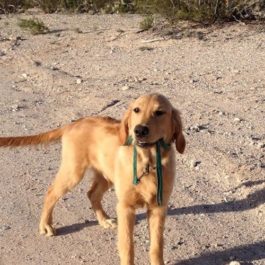Spotting Valley Fever in Dogs
 Arizona is a breading ground for Valley Fever, and that means it’s crucial for dog owners to be aware of the disease, what symptoms to look out for, and when it’s time to see the vet.
Arizona is a breading ground for Valley Fever, and that means it’s crucial for dog owners to be aware of the disease, what symptoms to look out for, and when it’s time to see the vet.
Valley Fever is a disease caused by the fungus Coccidiodes immitis. It is found in soil and has adapted to desert climates such as New Mexico and Arizona. Nevada, California, Texas and Utah also have cases of Valley Fever, according to VCA Animal Hospital.
Arizona is especially prone to Valley Fever and usually reaches epidemic levels. The height of the season is June and July, and October through November right around Monsoon season.
The mold lives dormant in dry soil and sprouts into the fungus in wet soil caused by heavy rainfall. The fungus grows and produces infectious spores that can easily become airborne via the wind or digging.
Dogs are extremely susceptible to contracting Valley Fever because they tend to sniff the ground and inhale the spores. Once they are inhaled, they transform into a yeast-like organism and infect the lungs.
Symptoms usually occur three weeks after infection and can include a harsh dry cough, fever, lack of appetite, lethargy, depression, pain or swelling in the joints, weight loss and even seizures.
Diagnosis usually include a titer blood test and chest x-rays. The blood test will help determine if Valley Fever antibodies are present, and an x-ray of the lungs help to see if any lesions are visible.
If the tests come back positive, anti-fungal medications are prescribed and usually are administered orally for 6 to 12 months.  Blood tests are needed every three months to determine if treatment is working.
Blood tests are needed every three months to determine if treatment is working.
Once the tests come back negative, treatment can stop. Unfortunately, relapses are common in dogs who had Valley Fever before.
When it comes to prevention the only thing dog owners can really do is cut down on time spent outside, especially for dogs who love to nose around in the dirt.
Dogs who are treated do recover well, and check up visits to the vet can help prevent a relapse.
















